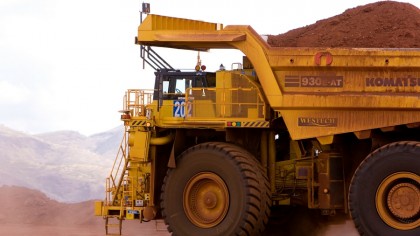Deep learning: How the mining industry got smart
With 5G, IoT and more, mining is becoming a test-bed for the latest tech
High times for Wi-Fi
Before you can do anything remotely smart, you need ultra-reliable connectivity. In the open copper and molybdenum mines of Chile's Atacama Desert – home of the highest mountain range in the Americas – round-trips back to the mine's central office block are very long. Up here at an altitude of a whopping 16,000ft, the atmosphere is dry and the temperature fluctuations incredible; for electronics, it's like going to Mars.
Cue the development of a Cisco Unified Wireless Network of ruggedised routers that can cope with all of that, and give remote mining and construction workers 'extreme Wi-Fi' everywhere they go. Cisco claims that it's saved 720 man-hours per month for field and construction engineers, and reduced both vehicle fuel expenses and employee fatigue. The same tech could one day be applied to all rural areas, especially those where hikers often get into trouble.

5G underground
As well as over vast, arid areas, mining companies need connectivity underground. Not just that, but if autonomous vehicles are to become a reality, 5G connectivity will be essential. Ericsson's Pilot for Industrial Mobile Communication in Mining (PIMM) project at Sweden's Boliden mine in Kankberg is investigating how to remotely control a 30-ton Volvo wheel loader.
Ericsson has set up a distributed radio network in the mine, with antennas arranged carefully to cope with the long underground tunnels and rough walls. For now, Ericsson is investigating how and when a radio signal gets interrupted by moving vehicles, and this tech will be used in Volvo vehicles later in 2016.

Autonomous vehicles
With the Wi-Fi and cellular side all sorted out, the big mines will be free to perfect the real prize; autonomous haulage, which is just a little more heavy-duty and dangerous than the early experiments with autonomous cars.
Hitachi has plans to offer just that, with its ambitious Autonomous Haulage System (AHS) scheduled to be ready by next year. Using fleet management software and hardware from Wenco Mining Systems, AHS will include an electric steering module inserted between the steering wheel and valve on dumper trucks, so that they can be controlled remotely.
When fully autonomous, the trucks will use digital maps to navigate around a mine, adhering to speed limits as they go, and using data from the on-board sensors to identify an exact location for dumping.
Sign up to the TechRadar Pro newsletter to get all the top news, opinion, features and guidance your business needs to succeed!
Hitachi's goal is 'centimetre accuracy', which is also the aim of Rio Tinto's concept of the 'Mine of the future'. As well as autonomous haulage (Rio Tinto is already trialling 69 partially autonomous trucks at its Pilbara iron ore mine in Western Australia), it's planning automated drilling and even a fully autonomous long distance railway called AutoHaul to get the ore to market.
There's always concern that advances in technology, and in robotics especially, will 'steal our jobs' and make humans obsolete. When it comes to difficult and dangerous tasks like mining, automation seems the smart choice for safety, but it's a lucrative one, too. If anyone was doubting its value, Future Market Insights (FMI) predicts that the smart mining market will top $13 billion (around £9 billion, or AU$17.5 billion) by 2020. No wonder there are so many tech firms at the coalface of smart mining.
- 1
- 2
Current page: 5G connectivity and autonomous vehicles
Prev Page Introduction and underground IoTJamie is a freelance tech, travel and space journalist based in the UK. He’s been writing regularly for Techradar since it was launched in 2008 and also writes regularly for Forbes, The Telegraph, the South China Morning Post, Sky & Telescope and the Sky At Night magazine as well as other Future titles T3, Digital Camera World, All About Space and Space.com. He also edits two of his own websites, TravGear.com and WhenIsTheNextEclipse.com that reflect his obsession with travel gear and solar eclipse travel. He is the author of A Stargazing Program For Beginners (Springer, 2015),
